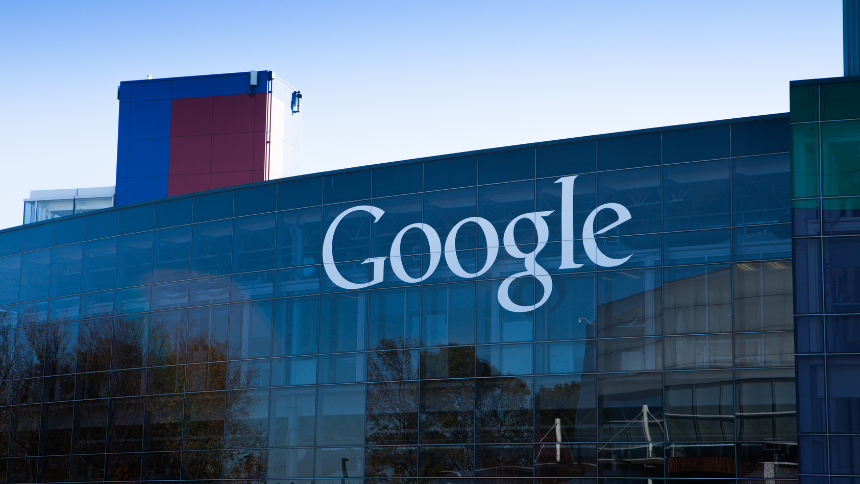The Role of UI/UX Design in Digital Success
In the digital realm, user experience (UX) and user interface (UI) design play a pivotal role in capturing and retaining users’ attention. Nectar understands the significance of UI/UX design and is here to shed light on its impact.
User-Centric Approach:
Design with the user in mind, prioritizing their needs and preferences.
Intuitive Navigation:
Create a seamless and intuitive flow that guides users through your website, social media or app.
Visual Consistency:
Maintain a consistent design language to create a cohesive and engaging experience.
Responsiveness:
Ensure your design is optimized for various devices and screen sizes.
Usability Testing:
Regularly test your design with real users to identify and address any pain points.
Ready to enhance your digital platforms with exceptional UI/UX design? Nectar can help you create user-friendly and visually appealing interfaces that leave a lasting impression. Contact us today to elevate your digital experience!
SEO Predictions and Trends for 2023
As a digital marketing agency that specializes in SEO, we are always looking ahead to the future of SEO. In this article, we will discuss our predictions and trends for SEO in 2023 and beyond.
1️⃣
Firstly, we predict that artificial intelligence and machine learning will play an even more significant role in SEO. By analyzing data and gaining insights, businesses can make informed decisions about their SEO strategy and continually improve their search engine ranking.
2️⃣
Secondly, we predict that user experience will become even more important in SEO. Search engines are placing more emphasis on user experience, and businesses need to ensure their site is user-friendly and optimized for mobile devices.
3️⃣
Thirdly, we predict that content quality will become even more critical. Search engines are prioritizing high-quality, engaging content, and businesses need to focus on creating content that provides value to their audience.
4️⃣
Finally, we predict that local search will continue to grow in importance. With more people using mobile devices to search for local businesses, businesses need to ensure their site is optimized for local search.
In conclusion, these are just a few of our predictions and trends for SEO in 2023 and beyond. By staying up-to-date with the latest trends and best practices, businesses can improve their search engine ranking and grow their online presence.
Contact us today to learn how we can help you prepare for the future of SEO and improve your search engine ranking.
5 Tips to Optimize Your Website for Google's First Page Results
Google’s search algorithm is constantly evolving, making it challenging for website owners to maintain a high rank. However, by implementing some basic optimization techniques, you can improve your website’s chances of ranking on the first page of Google’s search results. Here are five tips to help you get there:
Conduct Keyword Research:
Keyword research is a vital aspect of SEO. Use tools like Google Keyword Planner or Ahrefs to identify keywords that are relevant to your niche and have a high search volume. Once you’ve identified your target keywords, include them in your website’s content, meta tags, and URLs.
Create High-Quality Content:
Google’s search algorithm prioritizes high-quality content that is relevant to the user’s search query. Make sure your website’s content is well-written, informative, and engaging. Use images and videos to enhance the user experience.
Build High-Quality Backlinks:
Backlinks are an essential part of SEO. Google considers backlinks as a vote of confidence in your website’s content. Focus on building high-quality backlinks from authoritative websites in your niche.
Optimize Your Website’s Loading Speed:
Website speed is a crucial ranking factor. Optimize your website’s loading speed by compressing images, using a content delivery network (CDN), and minimizing HTTP requests.
Ensure Your Website Is Mobile-Friendly:
More than half of all internet traffic comes from mobile devices. Google prioritizes mobile-friendly websites in its search results. Ensure your website is optimized for mobile devices by using responsive design.
By implementing these optimization tips, you can improve your website’s chances of ranking on the first page of Google’s search results.
TOFU-MOFU-BOFU: A Guide to Implementing a Winning Marketing Strategy
In the realm of digital marketing, having a well-defined strategy is crucial to effectively engage and convert potential customers. TOFU-MOFU-BOFU, an acronym for Top of the Funnel, Middle of the Funnel, and Bottom of the Funnel, is a powerful framework that guides marketers in targeting prospects at different stages of their buying journey. In this article, we will explore what TOFU-MOFU-BOFU is and how you can implement it to drive results.
Top of the Funnel (TOFU)
At the TOFU stage, your focus is on capturing the attention of a broad audience and raising brand awareness. Leverage content marketing, social media engagement, and search engine optimization to attract and educate potential customers. Engaging blog posts, informative videos, and captivating social media campaigns are effective tactics for TOFU.
Middle of the Funnel (MOFU)
Once you have captured the attention of potential customers, it’s time to nurture those leads and guide them towards making a purchase. Offer valuable resources such as e-books, webinars, and case studies in exchange for their contact information. Use email marketing, targeted ads, and personalized content to engage with leads and build trust.
Bottom of the Funnel (BOFU)
At the BOFU stage, your objective is to convert leads into paying customers. Provide compelling offers, such as discounts, free trials, or limited-time promotions, to encourage purchase decisions. Use persuasive copywriting, customer testimonials, and clear calls-to-action to facilitate conversions.
By implementing the TOFU-MOFU-BOFU framework in your marketing strategy, you can effectively engage with potential customers at each stage of their buying journey. Focus on raising brand awareness (TOFU), nurturing leads (MOFU), and converting them into customers (BOFU). Ignite your marketing efforts with this comprehensive framework and witness remarkable results in your brand’s growth.
Unveiling the Power of "About Us" for Your Company Website
When it comes to establishing trust and connecting with your audience, the “About Us” section on your company website is paramount. It provides a valuable opportunity to showcase your brand’s story, values, and unique selling proposition. In this article, we will delve into why an engaging “About Us” section is essential for your company website and what key elements to include.
Build Trust and Credibility
An effective “About Us” section helps build trust by sharing your brand’s story, mission, and core values. It humanizes your brand, allowing visitors to connect with the people and passion behind your business. Including testimonials, awards, and certifications can further enhance credibility and instill confidence in your audience.
Differentiate Your Brand
Your “About Us” section is a chance to differentiate your brand from competitors. Highlight what sets you apart, whether it’s your unique approach, exceptional customer service, or innovative solutions. Showcase your expertise, experience, and any notable achievements to position your brand as a leader in your industry.
End your “About Us” section with a clear call to action.
Connect Emotionally with Your Audience
Storytelling is a powerful tool to evoke emotions and create a lasting impression. Use your “About Us” section to share captivating stories that resonate with your audience. Focus on the challenges you’ve overcome, the impact you’ve made, and the positive outcomes you’ve achieved. Engage your audience on an emotional level to foster a deeper connection.
Introduce Your Team
Introduce key team members and their roles to give a glimpse of the people behind your brand. Highlight their expertise, experience, and contributions. Including professional bios and photos humanizes your brand and fosters a sense of familiarity and trust.
End your “About Us” section with a clear call to action that directs visitors to take the next step. Whether it’s inviting them to explore your products or services, contact you for more information, or subscribe to your newsletter, provide a compelling call to action that encourages engagement.
Utilize this valuable space to tell your brand’s story, share your values, and highlight your unique offerings. Embrace the potential of an outstanding “About Us” section and elevate your brand’s online presence.
Understanding Google's Search Algorithm
Google’s search algorithm is complex and constantly evolving. Understanding how the algorithm works can help you optimize your website for better search engine rankings. Here’s a brief overview of Google’s search algorithm:
Crawling and Indexing
Google uses bots called “spiders” to crawl and index web pages. The spider analyzes the content on each page and adds it to Google’s index.
Ranking
Google’s search algorithm ranks web pages based on several factors, including relevance, content quality, backlinks, and user experience.
Search Intent
Google’s search algorithm also considers the user’s search intent. For example, if a user searches for “best pizza in town,” Google will prioritize web pages that provide a list of the best pizza places in that town.
Personalization
Google’s search results are personalized based on the user’s search history and location.
Machine Learning
Google’s search algorithm uses machine learning to improve its search results. The algorithm learns from user behavior and adjusts its rankings accordingly.
By understanding how Google’s search algorithm works, you can optimize your website to improve its chances of ranking on the first page of Google’s search results. We stay updated on changes to Google’s algorithm and adjust your SEO strategy accordingly.
10 SEO Tips to Boost Your Website
In today’s digital landscape, having a strong search engine presence is crucial for any business.
Here are 10 essential SEO tips to boost your website’s search engine rankings:
- Keyword research: Identify and target the right keywords relevant to your business and audience. Use tools like Google Keyword Planner or SEMrush to find the most effective keywords.
- On-page optimization: Optimize your website’s content by including targeted keywords in the title, headings, meta description, and within the body of the text. Make sure to maintain a natural flow and avoid keyword stuffing.
- Quality content: Create engaging, informative, and well-structured content that provides value to your audience. High-quality content is more likely to be shared and linked to, improving your search engine rankings.
- Mobile optimization: Ensure your website is responsive and mobile-friendly, as Google prioritizes mobile-optimized sites in search results.
- Site speed: Improve your website’s load time by compressing images, minifying code, and using a content delivery network (CDN). Faster websites rank higher in search results.
- Internal linking: Link to relevant pages within your website to improve user experience and help search engines understand your site’s structure.
- Backlinks: Earn high-quality backlinks from authoritative websites to establish your site’s credibility and improve its search engine ranking.
- Social media: Promote your content on social media platforms to increase visibility and attract more visitors to your website.
- Technical SEO: Address technical issues such as broken links, 404 errors, and duplicate content. Use tools like Google Search Console to identify and fix these issues.
- Track and analyze: Regularly monitor your website’s performance using tools like Google Analytics. Analyze the data to identify areas for improvement and adjust your SEO strategy accordingly.
Incorporating these 10 essential SEO tips will significantly improve your website’s search engine rankings. If you’re looking for professional assistance to further optimize your site and drive even more organic traffic, don’t hesitate to contact our web agency.
Get in touch with us today for a free consultation and let’s elevate your digital presence together!
Boost Your Website Loading Speed in 2023: Top Tips to Follow
A slow-loading website can be frustrating for users, leading to high bounce rates and low conversions. Optimizing your website’s loading speed is crucial to keep your audience engaged and ensure that they have a seamless user experience. Here are some top tips to follow in 2023:
Use a Content Delivery Network (CDN)
A Content Delivery Network (CDN) is a network of servers located in different regions worldwide that can distribute your website’s content to users. By using a CDN, your website’s content can be delivered from the nearest server to the user, reducing the time it takes for the website to load.
Optimize Your Images
Images are an important aspect of a website, but they can also slow down the loading speed. Optimize your images by compressing them without affecting their quality. This can significantly reduce their size and speed up your website.
Minimize HTTP Requests
HTTP requests refer to the number of times your website sends a request to the server to load a particular file. Minimizing HTTP requests can speed up your website’s loading time. To minimize HTTP requests, consider reducing the number of plugins and scripts on your website.
Use Caching
Caching is a process of storing frequently accessed data on the user’s device, allowing the website to load faster. By using caching, your website can avoid making multiple server requests, leading to faster loading times.
Upgrade Your Hosting Plan
Choosing a reliable web host that offers fast loading speeds is crucial for optimizing your website. Consider upgrading your hosting plan to ensure that your site is hosted on a fast and reliable server.
By following these tips, you can enhance your website’s loading speed, improve user experience, and boost your website’s performance. Regularly monitoring your website’s loading speed and making changes accordingly can help you stay ahead of the competition.
The Importance of Website Maintenance
Your website is a critical component of your online presence and brand image. As such, it’s essential to invest in ongoing website maintenance to keep your site up to date, secure, and optimized for success. In this article, we’ll explore the importance of website maintenance and its impact on your business:
Improved User Experience
Regular website maintenance ensures your site is user-friendly, easy to navigate, and free from bugs and errors that can negatively impact the user experience.
Increased Security
Regular updates and maintenance can help protect your site from security threats and prevent potential data breaches.
Enhanced Performance
Website maintenance can help improve site speed and performance, which is critical for user engagement and SEO.
Better SEO
By keeping your site updated with fresh content and optimized for search engines, website maintenance can help improve your site’s search engine rankings and attract more organic traffic.
Cost Saving
Investing in website maintenance can help prevent major issues and expensive fixes down the line, saving you time and money in the long run.
To ensure your website is always performing at its best, partner with a digital marketing agency that offers ongoing website maintenance services.
Don’t let your site fall behind.
The Ultimate Website Creation Checklist
Creating a website can be a daunting task, especially if you’re not familiar with the process. However, by following a checklist of essential steps, you can ensure that your website is well-designed, functional, and effective.
1. Determine your website’s purpose and goals:
Before you start designing your website, you need to determine its purpose and goals. What do you want your website to achieve? Who is your target audience? Knowing these things will help you make informed decisions about the design, content, and functionality of your website.
2. Choose a domain name and web hosting:
Your domain name is the address people will use to access your website, and web hosting is where your website’s files will be stored. Choose a domain name that’s easy to remember and relevant to your business. Look for a reliable web hosting provider that offers the features and support you need.
3. Plan your website’s structure and content:
Create a sitemap or outline of your website’s pages and sections. Decide what content you’ll include on each page and how it will be organized. Keep in mind your website’s purpose and goals and your target audience’s needs and preferences.
4. Design your website:
Use a website builder or hire a web designer to create a visually appealing and user-friendly design. Choose a color scheme, typography, and imagery that reflects your brand and appeals to your audience. Make sure your website is easy to navigate and loads quickly.
5. Develop and test your website:
Build your website using the design and content you’ve planned. Test it thoroughly to ensure it’s functional and works well on different devices and browsers. Make sure it’s optimized for search engines and includes the necessary security features.
By following our checklist, create a website that meets your business needs, engages your target audience and stands out.
If you need help getting started, don’t hesitate to reach out to one of our experts for guidance and support.









